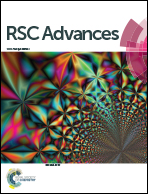Compromising high strength and ductility in nanoglass–metallic glass nanolaminates
Abstract
We use large-scale molecular-dynamics simulations to investigate the deformation and failure mechanisms associated with tensile loading of 50 nm diameter Cu64Zr36 nanolaminate nanopillars constructed either as 5 nm thick layers of metallic glass (MG) or alternating 5 nm thick layers of MG and 5 nm grain sized nanoglass (NG). The MG–MG nanolaminate exhibits delayed shear band formation and diffused shear banding failure while the NG–MG nanolaminate shows exceptional plasticity to a strain of ε = 0.15 prior to a necking-type failure. The MG–MG nanopillar has approximately the same restricted ductility and ∼15% lower strength than a reference MG nanopillar. The NG–MG nanopillar, on the other hand, retains the same level of ductility but displays ∼20% higher strength than a reference NG nanopillar. These results suggest that nanolaminates of NG and MG offer promise for creating structures that combine outstanding strength and ductility.


 Please wait while we load your content...
Please wait while we load your content...